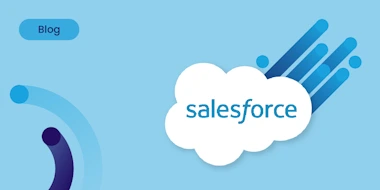Should My Staffing ATS Include a Payroll Solution or Not?

Blog by Bobby Bartlett on Payroll Solution within the ATS
I often speak to temp staffing companies that are frustrated with their current system because their technology is seemingly lagging behind the rest of the industry and it makes it difficult for them to progress their business in certain ways. Strong front office (sales, marketing, and recruiting) features often seem like an afterthought in these systems, and they really struggle with scalability due to the lack of API integrations, reporting functionality, and overall configurability. I believe that this is due to many vendors striving to be a jack of all trades instead of mastering one. Payroll is such a beast of a product for software companies to manage with all of the functionalities involved and ever-changing compliance, rates, etc. It becomes all-consuming and does not allow for the rest of the technology to progress. I simply do not believe that as it stands today, companies can have their cake and eat it, too. In other words, they can’t have payroll solution included with their staffing technology suite and still enjoy the most cutting edge technology features elsewhere within their tool.
An example of where the technology often suffers is with search technology and applicant workflow management. If your firm does 100% light industrial staffing and/or administrative staffing, you might only need to pre-board candidates, check availability, and send your employees to the next assignment. This is not usually the case though, as most temp staffing firms do a percentage of higher-margin contract engagements or permanent placements. Often I see these types of companies splitting this work into two different ATS tools—one meant for their lower-margin temp staffing and another meant for their higher margin staffing. Or they try to make their higher margin work fit into their ATS they use for temp staffing, and it becomes a problem because the system is not designed to handle both. With a highly flexible system and an integration to a 3rd-party payroll solution, you should be able to handle both! Below are the general strengths and weaknesses of some of these staffing software tools that specialize in high volume temporary staffing (i.e., systems that include payroll as part of their solution):
Weaknesses
Sales & Marketing
It is tough to grow revenue without strong sales and marketing functionality. Most temp staffing software provides the bare minimum of contact and task management with little else in mind for sales people. Having the ability to manage inbound leads, or forecast off of a sales pipeline is important for many firms. Also, marketing automation tools (like Hubspot or Marketo) can help create customized outreach campaigns to sales contacts and candidates alike, while using custom landing pages to help track where every lead is sourced from. What really sets TargetRecruit apart here is you can automate the majority of the heavy lifting salespeople do with tools like computer telephony integrations (CTI), integrations with data providers (like ZoomInfo), SMS messaging, or sales drip campaigns (Groove.co, Outreach.io).
Recruiting
Candidate search is important for all types of staffing companies. The stronger your search capabilities, the faster you will be able to find quality candidates, the happier clients will be, and the more revenue you will make. Companies outside of the temp software space tend to spend much more time enhancing search capabilities on their roadmap. Also, candidate workflow management tends to be much stronger in the non-payroll ATS space. This process tends to vary greatly from company to company so flexibility is really important here.
Reporting
In fairness, this tends to be a widespread weakness of other systems. Short of bolting on an expensive and hard to understand business intelligence (BI) tool, it is nearly impossible to get the information you need to run your business in one place. Having the ability to create reports from scratch as well as tweaking existing reports is one of the crucial pieces I see missing from systems in our space. Finding a tool with ad hoc reporting that can pull data from any table in your database is crucial. I talk to people every day that take information from 3-7 systems, export it to excel, doctor it, and try to make sense of the data that way, which can take hours, if not days, of time. Staffing technology should save time and provide a deeper level of insight for your business, not the opposite.
Configurability/Flexibility
By far the hardest to explain in one paragraph, but rigidity is the biggest drawback of systems in this space. The inability to make changes without having to pay professional services for customization kills the agility and speed of staffing organizations. Moreover, customizations break and disallow new system updates because they are not “backwards compatible.” Some examples are things we already covered, like changing candidate workflow or building ad hoc reports. Some other examples are:
- Building custom objects (creating your own data tables to intermingle with existing data tables, like accounts, job orders, or candidates). A use case for this is one of our customers built their own custom assessments object that integrated with their candidate portal and other objects in TargetRecruit.
- Limitations of record types, such as job types. For example, some companies want to have many different job types so they don’t have to pack too many fields into one record type (for ex. Temp-to-Hire or Perm), thus making the screens too busy and confusing.
- Some staffing companies want to change the entire look and feel from one screen to another to fit their vision. Most staffing software providers have very little you can change about the layouts.
There are many more examples I could mention here but I just wanted to highlight a few common ones.
Partner Ecosystem/API Capabilities
Many tools in the temp staffing software space have very weak API capabilities, if any, and very few partners to choose from. I often see somewhere between 20-40 partner integrations, and without a robust API, it is very difficult to integrate with new partners because it requires expensive development resources from both sides. Not to self-promote, but to provide a frame of reference, the TargetRecruit and Salesforce platforms provide for over 5,000 plug and play integrations. For us as well, plug and play literally means one click installation, just like when you download an app on your smartphone.
Weak (or no) API capabilities also means you can’t take another technology provider you really like that isn’t already integrated and do so without expensive development.
Strengths
Payroll Solution
The main strength of temp staffing tools is their payroll solution. They are generally going to get the most attention from a research & development dollars standpoint, because compliance is not an option for temp staffing, it is a must. If you can’t effectively search, or you have to take the long road to get a report you want, the cost to your business is for the most part hidden and difficult to quantify. If you are not in compliance with payroll, Uncle Sam WILL find you and make you pay. Thus, a payroll solution needs to be airtight, and with most temp staffing software providers, this is the case. I’ve found the payroll technologies here to be for the most part impressive.
Payroll Agility
If you control your payroll and your payroll is not outsourced, you can cut a check on the spot if a mistake is made, which they will be.
Cost (Managed vs. In-House)
General consensus is that managed providers (ADP & Paychex) are more costly than handling payroll in house, and it’s hard to argue this sentiment. For example: ABC Staffing has 25 internal employees (sales, recruiters, operations, management, etc.) and pays 500 temp employees per week and 650 employees per month (PEPM) due to 30% turnover. Let’s assume in an equal world that an ATS for all three scenarios will be a wash from a cost standpoint.
Scenario 1 – Handing Payroll In-House with an ATS that Includes Payroll: First there is the human capital cost. Let’s say ABC staffing has 2 FTEs that cost roughly $45,000/year full burdened. Those two employees spend Monday and Tuesday of every week just handling payroll, so ⅖ of their job, or $18,000/year each. This totals about $36,000 of cost in human capital. Plus there are other costs like paying for Greenshades, managing ACA compliance and worker’s comp that come into consideration as well.
Scenario 2 – Paying for Managed Payroll: Let’s guesstimate that the full service payroll provider charges $6 PEPM. That comes out to $46,800 per year. Pretty simple math!
Scenario 3 – The Hybrid “Best in Breed” Approach: In this scenario, you would buy a front to back system (sales, recruiting, onboarding, timekeeping, invoicing, etc.) and integrate it with a payroll software solution. This software solution manages your ACA compliance, worker’s comp, and all of your tax tables for you. You run your own payroll, but they charge $1/check. If you’re paying on average 500 employees per week at $1/check, that will come out to $26,000/year. You will still need to pay at least one to two people to run payroll each week for 2 days, costing $18,000-$36,000 year. In theory, there should be less work here.
Conclusion
In the end, there are pros and cons for using an ATS with or without a payroll solution. Scenario 1, the scenario your firm is probably using today, is the cheapest and seemingly cleanest, but there could be consequences to your firm’s growth by going this route. Scenario 2 largely depends on the PEPM price you negotiate, but if that rate is low, it can make a lot of sense for staffing firms to just outsource payroll altogether. Scenario 3 is the scenario I predict will become more popular in the future, because staffing companies realize how much that maintaining a payroll product weighs the rest of their staffing solution down, yet they still prefer to handle payroll in-house for multiple reasons.
Decisions are often made based on the bottom line, just be careful not to prioritize cheapest over best value. Your system should never dictate what your business can do. It should help mold to whatever your future needs or opportunities might be. It should also have a strong focus on front office features, since they are what drives revenue, especially in sales and marketing.
If you’d like to connect to discuss, send me an invite here.






